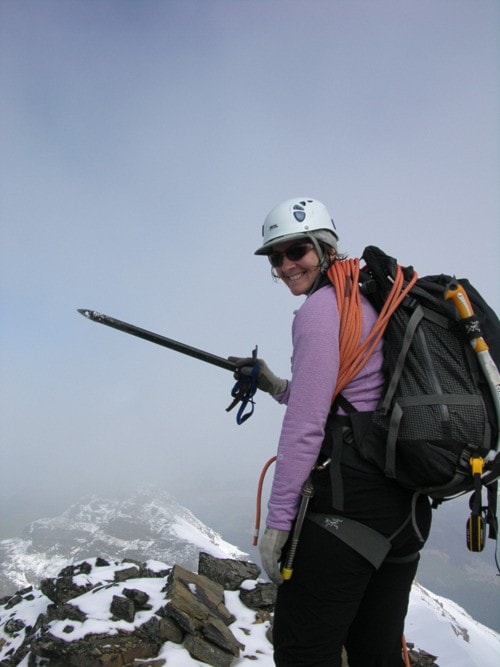Dana Foster Ludwig
Adventure - 1: a risky undertaking 2: a remarkable and exciting experience
Risk - Exposure to possible loss or injury
Definition from Websters New Explorers dictionary
A variety of climbing opportunities exist due to the volcanic geology and abundant hydrology of southern Wells Gray Provincial Park. Will Gadd a sponsored “elite” adventure athlete recently discovered the winter mysteries of Helmcken Falls. Aside from the perceived drive for people to test their bravery and skills...I believe it’s the attraction of the unknown and the timelessness of the desire to explore nature that draws people to places outside of the average persons comfort zone. For some it’s an uncomfortable proposition to put oneself in an environment of real or “perceived” risk while exploring the natural world.
Over the centuries humans have been driven to “explore” the planet. Epics such as Shakletons extended adventures, or the Viking, Russian and Asian explorers crossing the great oceans in search of what’s out there define human history and discovery. I believe Will Gadd’s discovery of the Helmcken Falls ice features is a modern day extension of the eternal human drive to seek adventure and explore. Technical adventure sports require a high level of formal training in addition to extensive experience. The ice cave of Helmcken Falls won’t become a “popular” destination any time soon.
The editorial by Keith McNeil in last week’s paper re-opened the debate regarding the responsibility of rescue costs when an adventure goes bad. Eternally this discussion has centered on the cost of rescue and who should pay? Risk tolerance, when exposed to the forces of nature, is beheld by the individual. I became curious as to some real statistics in regard to this subject? Are self-propelled adventure activists sucking SAR budgets? From the BC Coroners Service website I reviewed the 2008 annual report. Here are the facts.
Recreational activities accounted for 9.0 per cent of accidental death in British Columbia for 2008. Of these activities the five highest causes of death were;
#1 Snowmobiling (16 people), #2 Swimming (13), #3 Motorbike/ATV/Off-road vehicles (12)#4 Small aircraft (11) and #5 Fishing (8). Hiking/climbing deaths were not separated but represented 8 combined deaths in 2008. Two people died shoveling snow and one person met their untimely death tobogganing. Horseback riding and mountain biking each represented one death in 2008. Skiing both on and off-piste represented eight accidental deaths.
Motor vehicle accidents and heart disease claim the highest proportion of lives across Canada. The Boulder Mountain snowmobile avalanche tragedy last March cost over $1,000,000, involved 12 helicopters, 45 certified guides and three SAR teams. Over 30 people were injured, two died and over 200 people were involved. The real tragedy is that those who died did not trigger the avalanche that took their lives.
Society would benefit with having more people involved in self-propelled adventure this may cut down on heart disease and reduce health care costs.
- Dana Foster Ludwig is a CAA Professional Member and ACMG Ski Guide. This column is sponsored by Snowy Mountain Alpine Tours.
